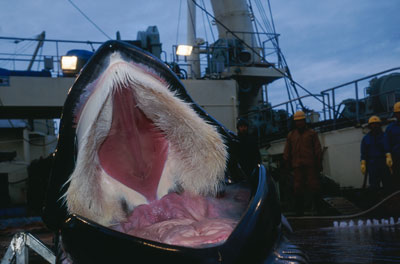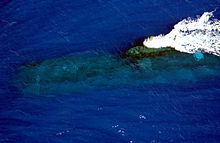Divetalking » extinction, Killer Whale, ocean, Preservation, Reference, Report, Shrimp, Stories, Whales » Blue Whales sighting off California
Blue Whales sighting off California
July 9th, 2012 | Comments Off on Blue Whales sighting off California
Have you ever seen pictures of a submarine, while it was underwater?
Long and sleek, like cylindrical tubes, blue whales are are the largest animal to be known to live on earth and are the largest mammal in the world.
When born, the calf can weigh as much as one ton, gaining as much as 200 lbs a day during its first year. The gestation period for the female blue whale is approx 11 months.
Blue whales are found in all our oceans, traveling alone or in small groups. They travel to regions that provide food or nursing their new born, known as a calf. During the summer months, they may be found in the arctic. As winter arrives, they migrate south towards the equator and can be found around the Baja California peninsula, a peninsula in northwestern Mexico.
One of the primary foods for the blue whale is krill, tiny shrimp that travel in the millions. The mouth of the blue whale contains a screen like structure (baleen) ,  a form of a screen that allow for the filtering of their food. The Baleen or whalebone is a filter system found inside the mouths of baleen whales. The baleen system works when a whale opens its mouth underwater, water rushes in. The whale then forces the water out, where animals such as krill are filtered by the baleen and remain as food source for the whale. Baleen is similar to bristles and is made of keratin, the same substance found in human fingernails and hair. Blue whales can eat 3 to 7 metric tons a krill a day.
a form of a screen that allow for the filtering of their food. The Baleen or whalebone is a filter system found inside the mouths of baleen whales. The baleen system works when a whale opens its mouth underwater, water rushes in. The whale then forces the water out, where animals such as krill are filtered by the baleen and remain as food source for the whale. Baleen is similar to bristles and is made of keratin, the same substance found in human fingernails and hair. Blue whales can eat 3 to 7 metric tons a krill a day.
There a a few creatures on earth that pose a threat to the blue whale, as large as they may become. One of these threats are killer whales and of course man. Commercial whaling has threatened the baleen whales for centuries. Whale oil, make by heating a whales blubber, was known as “liquid Gold,” and could be used in everything thing. Makeup, lamps and food were some of the most common.
On July 5, 2012 Monterey Bay Whale Watch reported sightings of 12 blue whales.
The average life span of the blue whale is 80-90 years and can grow in length up to 80-100 feet.
Amazing is the life that lives in our oceans. Let us not discover one day what was once living in our oceans is extinct because we were ignorant or complacent.
[singlepic id=777 w=320 h=240 float=left]
The picture on the left is one of a Blue Whale. The picture on the right is of a submarine.
© 2012, admin. All rights reserved.
Filed under: extinction, Killer Whale, ocean, Preservation, Reference, Report, Shrimp, Stories, Whales
Scuba Diving Calculators
** This will affect all calculations
Cloud Tag
Most commented
Recent Articles
- Where is the Hyperbaric Chamber?
- Clicky.com Advanced real-time web analytics
- Divers and crew missing after Red Sea liveaboard Sea Story sinks
- Nekton’s Rorqual and Pilot, former scuba lieaboards to become artificial reefs off Destin-Fort Walton Beach
- Laser Engraving, Marking and Cleaning of High-Pressure Vessels
- Loggerhead Holdings, Inc Joint Law Suit
Tag Cloud
artificial reef blowing up reefs Canon 5D Mark III cay sal conservation cozumel death dive diver dive show divetalking dolphin explosive reefs FIsh ID fishinar Fred Morrow Fred Morrow Artificial Reef Fred Morrow Reef FWC Leatherback lionfish lion fish lionfish derby lionfish harvesting logo lost missing Narcosis Nekton Ocean Photography polution Preservation RDP recall Recreational Dive Planner reef scuba show Sharks Shark Weak titanic tuna Underwater Photography Workshop Zeagle© 2026 Divetalking








